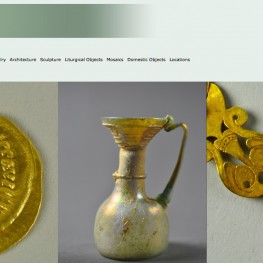Buddhist Medicine
By: Stephen Lang
The Asian Section is happy to host a guest blog post by C. Pierce Salguero, Assistant Professor of Asian History and Religious Studies at Penn State University’s Abington College. He is the author of Translating Buddhist Medicine in Medieval China, published by Penn Press in 2014. (Photo selection and captions by Stephen Lang) Medicine in Early Buddhism Knowledge […]
Eastern Turkey Feather Headdress
By: Margaret Bruchac
This object analysis was conducted for the Spring 2016 course Ethnohistory of the Native Northeast. Students are studying Native American objects in the Penn Museum collections by combining close material analyses (elements, construction, design, condition, etc.) with other forms of evidence: textual, photographic, historical, and ethnographic. In many cases, the objects we’re studying have little to no provenance data. So, we are […]
Considering the Feather Headdress
By: Margaret Bruchac
During the Spring 2016 course Ethnohistory of the Native Northeast, students are studying Native American objects in the Penn Museum collections by combining close material analyses (elements, construction, design, condition, etc.) with other forms of evidence: textual, photographic, historical, and ethnographic. In many cases, the objects we’re studying have little to no provenance data. So, we are seeking out similar objects, reaching out […]
Portraying Nippur: Artist Osman Hamdi Bey’s Early Relationship with the Penn Museum
By: Hannah Effinger
The Penn Museum is perhaps best known for its impressively large and varied collection of artifacts spanning practically the entirety of human existence, but recently visitors were given a special chance to step into the Museum Archives to learn about some unexpected items housed in the Museum—two paintings and the unique ties they have to […]
Greenland Inuit Doll
By: Margaret Bruchac
The Lady in Furs Object Analysis and Report for Anthropology of Museums by Monica Fenton This Inuit (Eskimo) doll, accessioned in 1937 (37-14-7), is one of seventeen objects from Greenland donated by Samuel C. Ingraham. The collection, consisting mostly of footwear, also includes a model kayak with a human figurine and miniature harpoon. The doll came from […]
Ladies in Fur, Traveling through Time
By: Margaret Bruchac
The Penn Museum holds a variety of dolls from Arctic environs, including those collected by William Van Valin, George Byron Gordon, Captain George Comer, and the Peary Relief Expedition. Most of the items classified as “dolls” are small wooden figures; only a few represent realistic renditions of Arctic clothing. This Inuit (Eskimo) doll from Greenland (object […]
Iñupiaq Smoking and Siberian Reindeer
By: Margaret Bruchac
This semester, my students in Museum Anthropology conducted close examinations of objects from Arctic locales in the collections of the Penn Museum. During our object analysis of this walrus tusk ivory Iñupiaq pipe (item# 39-10-1) in the Collections Study Room, I was intrigued by the idea that it was used for smoking opium, given the absurdly small hole in […]
Iñupiaq Pipe
By: Margaret Bruchac
Searching for Stories: Patiently Listening to an Iñupiaq Pipe Object Analysis and Report for Anthropology of Museums by Sarah Parkinson As a student intern in the American Section of the Penn Museum, part of my job involves inventorying accessioned objects. When I first started, I was curious about every object I handled. During the first few days, […]
Alaska Harpoon Rest
By: Margaret Bruchac
Alaska Harpoon Rest: Supported by Bears, Whales, and Chains Object Analysis and Report for Anthropology of Museums by Enika Selby This Iñupiaq (also called Eskimo or Inuit) harpoon rest (Museum Object Number: NA4796) came to the Penn Museum from Sledge Island, Alaska, a tiny island off the Western coast. It is hand carved from walrus ivory, […]
Creating Beth Shean After Antiquity
By: Rebecca Vandewalle
This spring, I had the opportunity to sit in on a graduate seminar focusing on the ancient site of Beth Shean in northern Israel (Beth Shean After Antiquity, taught by Dr. Robert Ousterhout). When I first registered, I expected the class to be similar to other archaeology courses I had taken – mostly lectures, discussions, […]









